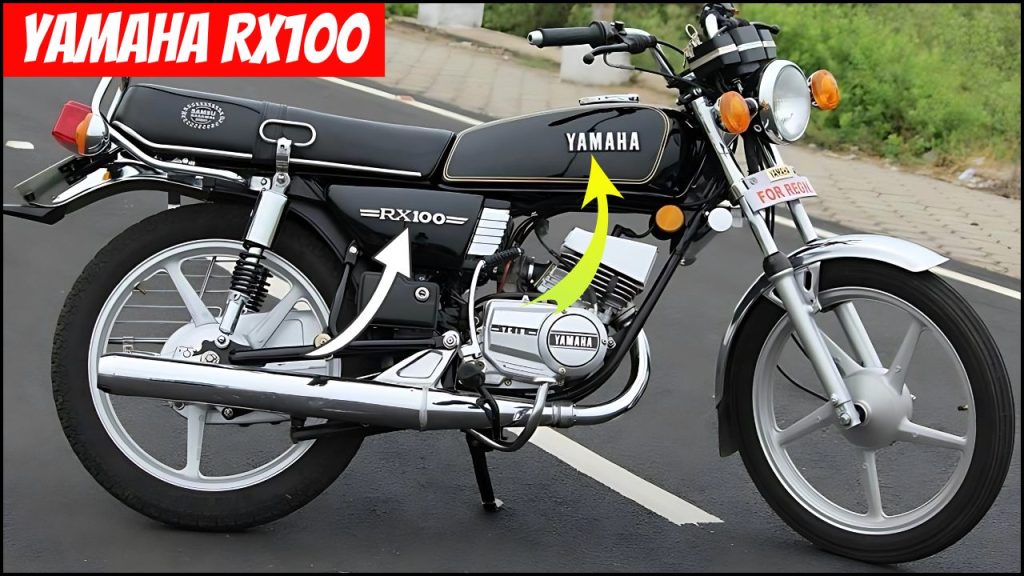
In the colorful tapestry of India’s motorcycling heritage, the Yamaha RX100 stands as a remarkable thread that continues to evoke powerful nostalgia decades after its production ended. This legendary motorcycle, with its distinctive exhaust note and spirited performance, wasn’t just a mode of transportation but a cultural phenomenon that captured the hearts of an entire generation. Today, the Yamaha RX100 remains a coveted collector’s item, with well-preserved models fetching prices around ₹85,639—a testament to its enduring legacy.
The Birth of a Legend: How the RX100 Came to India
The mid-1980s marked a pivotal moment in India’s automotive landscape. As the government began relaxing import restrictions, foreign manufacturers found new opportunities to enter the promising Indian market. Yamaha Motor Company, through a strategic collaboration with Escorts Group, introduced the RX100 to Indian consumers in 1985.
Before the arrival of the Yamaha RX100, the Indian motorcycle scene was dominated by utilitarian commuters and Royal Enfield Bullets that served a niche segment. The RX100 carved an entirely new category—an affordable, lightweight motorcycle that delivered thrilling performance previously unavailable at its price point. Its introduction coincided perfectly with India’s economic liberalization and the growth of a middle class eager for exciting yet accessible personal transportation options.
Engineering Excellence: The Heart of the Beast
What made the Yamaha RX100 truly special was its remarkable engineering. At its core sat a 98cc, two-stroke, air-cooled, single-cylinder engine that produced approximately 11 bhp at 7,500 rpm and 10.39 Nm of torque at 6,500 rpm. While these figures might seem modest by today’s standards, they were revolutionary for a 100cc motorcycle in mid-1980s India.
The engine featured Yamaha’s renowned torque induction system, optimizing power delivery across the rev range. The two-stroke architecture provided an exceptional power-to-weight ratio and immediate throttle response that became the motorcycle’s defining characteristic. Power transmitted through a perfectly matched 4-speed constant mesh gearbox, allowing riders to extract maximum performance with minimal effort.
The motorcycle’s physical dimensions contributed significantly to its performance credentials. With a dry weight of just 103 kg and a wheelbase of 1,230mm, the RX100 offered nimble handling that complemented its spirited engine. The conventional suspension setup—telescopic forks at the front and swing arm with dual shock absorbers at the rear—provided confident handling characteristics that inspired rider confidence.
The Unforgettable Riding Experience
Those fortunate enough to have experienced the Yamaha RX100 often describe the riding experience in reverent terms. The ritual began with the distinctive kick-starting procedure that brought the two-stroke engine to life, accompanied by characteristic blue smoke and the unmistakable ring-a-ding idle note.
From standstill, the RX100 exhibited the momentary hesitation typical of two-stroke engines before the power band kicked in around 3,000 rpm. When it did, the acceleration was nothing short of exhilarating—sprinting from 0 to 60 km/h in approximately 7 seconds, impressive even by today’s standards for its class.
Perhaps most memorable was the soundtrack—a high-pitched crescendo that built as the engine climbed through its rev range, punctuated by the characteristic “braaap” when the throttle was blipped. This acoustic signature became so associated with the motorcycle that enthusiasts could identify an approaching RX100 by sound alone, long before it came into view.
Cultural Impact: More Than Just a Motorcycle
The influence of the Yamaha RX100 extended far beyond its mechanical attributes. It arrived at a time when India’s youth increasingly sought self-expression, and the motorcycle became a powerful symbol of freedom, rebellion, and aspiration. In countless Indian towns and cities, owning an RX100 established definitive “cool” status, with its reputation for speed making it popular among young riders looking to make a statement.
The RX100 also fostered a robust modification culture that continues today. Owners would customize their motorcycles with expansion chambers, port modifications, and aesthetic changes to express individuality and extract even more performance. This culture of modification lives on among remaining examples, with enthusiasts preserving not just the motorcycles themselves but the knowledge and skills needed to maintain these relatively simple yet special machines.
The Collector’s Dream: Rising Value and Preservation
Today, the Yamaha RX100 has transcended its status as a motorcycle to become a highly sought-after collector’s item. Well-preserved or properly restored examples command prices several times higher than their original cost—a remarkable feat for any vehicle. This appreciation in value speaks volumes about the motorcycle’s enduring desirability and cultural significance.
The rising values have spawned a dedicated restoration industry focused on returning neglected examples to their former glory. Finding original parts has become increasingly challenging, leading to a thriving market for new old stock components and high-quality reproductions. Collectors particularly prize early models with their distinctive square headlamps and original paint schemes.
Beyond monetary value, many collectors view the RX100 as a tangible connection to their youth or to a simpler era of motorcycling—when machines were purely mechanical rather than electronic, and the connection between rider and motorcycle was more direct and visceral.
Legacy and Modern Influence
While the Yamaha RX100 itself hasn’t been manufactured for decades, its spirit lives on in motorcycles designed to evoke similar emotions. Yamaha’s modern offerings, while technologically distant from the RX100, attempt to capture some of the original’s sporting character and accessible performance.
More directly, the resurgence of interest in the RX100 has inspired other manufacturers to explore retro-styled motorcycles with modern underpinnings. Rumors of the RX100’s potential revival surface periodically, though the challenges of meeting modern emissions standards while retaining the two-stroke character make a direct successor unlikely.
The Timeless Appeal of a Two-Stroke Icon
What makes the Yamaha RX100 particularly special is that its appeal transcends generations. Those who experienced it during its production run remain devoted advocates, while younger enthusiasts—many born long after production ceased—seek out these machines for the pure, analog motorcycling experience they offer.
In an era where vehicles increasingly prioritize efficiency and technology over character and engagement, the continued admiration for the RX100 serves as a powerful reminder that the emotional connection between rider and machine matters deeply. The distinctive smell of two-stroke oil, the mechanical symphony of its engine, and the unfiltered feedback through handlebars and seat created memories that fuel its legend decades later.
As India’s automotive landscape continues its rapid evolution toward electrification and autonomy, the Yamaha RX100 stands as a significant milestone that marked not just a point in technological development but a cultural moment that continues to resonate in the hearts of enthusiasts. Few motorcycles can claim such an enduring legacy or inspire such passion across multiple generations of riders.

Katherine Johnson is a passionate writer with a keen interest in storytelling, content creation, and creative expression. She enjoys exploring diverse topics and crafting engaging narratives that captivate readers.



